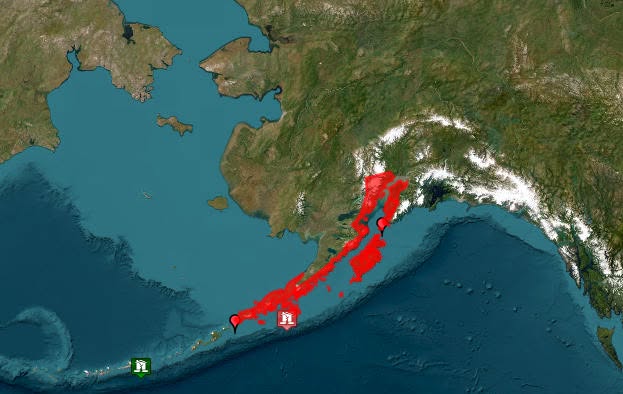A powerful 7.2-magnitude earthquake struck off the coast of Alaska, prompting immediate tsunami warnings for coastal areas of the Alaska Peninsula and parts of Southcentral and Southwest Alaska.
The earthquake, centered approximately 50 miles south of Sand Point, Alaska, occurred at 12:38 p.m. local time, according to the U.S. Geological Survey (USGS). The National Weather Service’s Pacific Tsunami Warning Center (PTWC) swiftly issued alerts, urging residents in affected areas to evacuate to higher ground.
The quake’s epicenter was located near the Aleutian Chain, a seismically active region where the Pacific Plate subducts beneath the North American Plate.
This tectonic activity makes Alaska prone to significant earthquakes, with magnitudes between 7.0 and 7.9 considered highly dangerous. According to the USGS, the earthquake’s proximity to the Alaska Maritime National Wildlife Refuge and its depth contributed to the potential for tsunami activity.
As reported by KOMO News, “The U.S. Tsunami Warning System says the warning is in effect for the coastal areas of South Alaska and the Alaska Peninsula from Kennedy Entrance, 40 miles southwest of Homer, to Unimak Pass, 80 miles northeast of Unalaska.”
Emergency officials emphasized the urgency of the situation, warning that tsunami activity could begin as early as 1:16 p.m. Alaska time in communities such as Sand Point, Cold Bay, and Kodiak.
“Residents are told to stay away from beaches, harbors, and low-lying coastal areas until officials declare it safe,” KOMO News reported, highlighting the potential for “damaging waves, powerful currents, and debris-filled floodwaters” that could strike repeatedly for hours.
The National Oceanic and Atmospheric Administration (NOAA) also noted that the risk to British Columbia’s coast was under evaluation, indicating the broader regional implications of the event.
While no tsunami waves had been observed at the time of the initial reports, the PTWC stressed the importance of immediate action. The warning underscored the unpredictable nature of tsunamis, where later waves could be more dangerous than the first.
This event follows a history of seismic activity in the region, including a 7.5-magnitude earthquake near Sand Point in 2020 that generated a small tsunami, and an 8.2-magnitude quake in 2021 that prompted a brief tsunami warning.
The Alaska Earthquake Center reported that the quake was felt across the Alaska Peninsula and Kodiak Island, areas accustomed to seismic events but always at risk of significant impacts.
As communities awaited further updates, the focus remained on safety and preparedness. Authorities continue to monitor the situation, with the potential for updates or cancellation of alerts as more data becomes available.
For residents in Alaska’s coastal regions, the event serves as a stark reminder of the state’s volatile geology. As Mayor Pat Branson of Kodiak remarked in a similar event in 2018, “We live in a very prone earthquake and tsunami area, and it’s a beautiful place, but that’s what you have when you live in paradise.”



